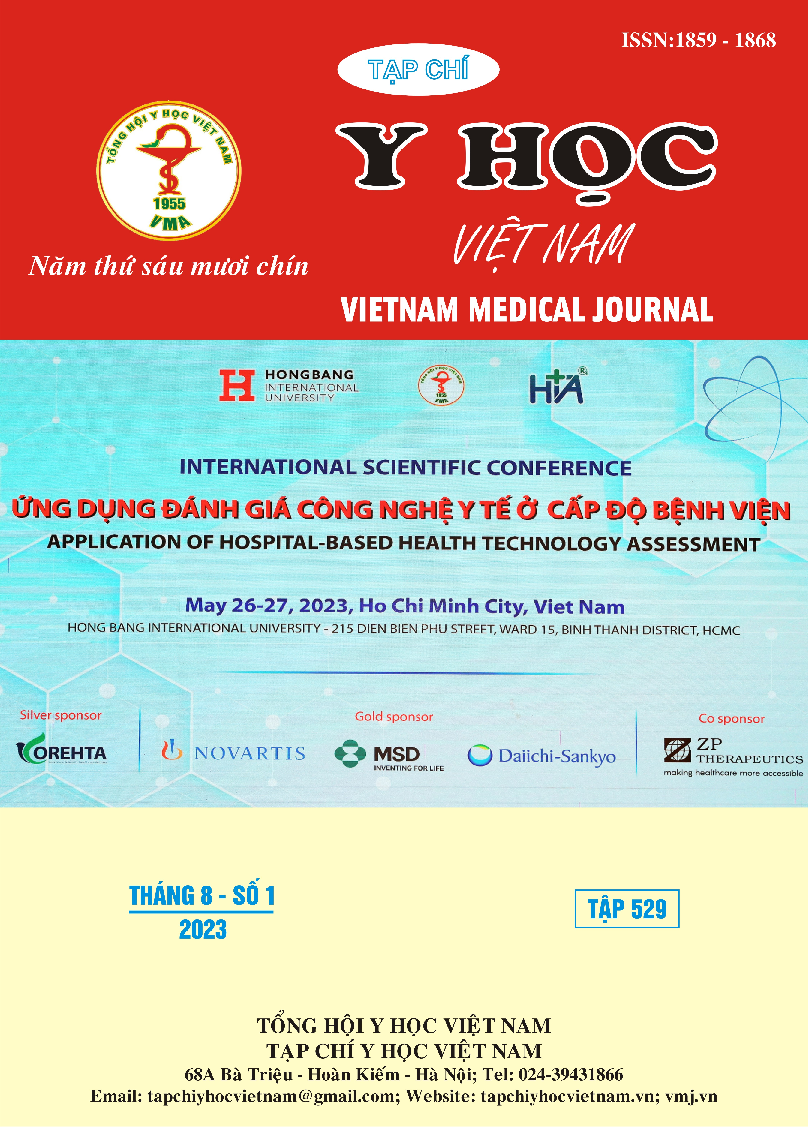THE CHANGE OF SOME COAGULATION INDICES IN SEPTIC SHOCK PATIENTS
Main Article Content
Abstract
Objectives: To survey the change of some coagulation parameter septic shock patients. Materials and method: Prospective Descriptive Study on 30 septic shock patients treated in the Centre of Emergency, Intensive Care Medicine and Clinical Toxicology – 103 Military Hospital – Vietnam Military Medical University. Result: The male/female ratio was 1.5, average age of 61,4 ± 17,3 Where as 46,7% had co - disease. Death rate is 46,7% (14). The lowest platelet count at the 3rd day (121 ± 85,8) and at the 5th, 7th day of the dead group was lower than the survivor group statistical significance (p<0,05). The PT% of the dead group was 70% lower than at the time of diagnosis sepsis shock, then gradually decrease on the next day and reached the lowest on the 7th day (48 ± 29,8%) clearly low when compared to the survivor group at the 5th, 7th day (p>0,05). Similar to APTTs extended more than 42s straight at the time of dianogsis, continued increase in the following day and reached the highest at the 7th day (60,15 ± 43,2s) and to compared to the survivor group, it’s significance different (p>0,05) at the 7th day. DIC score > 5 and gradually increased in the whole 5 times of study, reached the highest at the 7th day (5,9 ± 1,3) of the dead group and higher than the survivor group statistical significance at the 5th, 7th day. Conclusions: The sepsis shock patients of the dead group have the platelet count and PT% index tended to decrease gradually, APTTs time was prolonged over the study period and there is statistically significance difference compare to the survivor group at the 5th and 7th day. To go abreast with that is the DIC score > 5 at all over the time of study and clearly different when compare to the survivor group at the 7th day
Article Details
Keywords
Coagulation indices, DIC score, septic shock.
References
2. Nguyễn Thủy. Đặc điểm lâm sàng, cận lâm sàng và một số yếu tố liên quan đến kết quả điều trị bệnh nhân sốc nhiễm khuẩn tại bệnh viện TW Thái Nguyên. Tạp chí Y học Việt Nam. 2021, Tập 498, số 1, Tr 149-152.
3. Iba T. et al. Advance in the Management of Sepsis-Induced Coagulopathy and Disseminated Intravascular Coagulation. Journal of Clinical medicine. 2019, Vol 8, page 728.
4. Thiều Thị Trúc Quyên. Giá trị tiên lượng tử vong của thang điểm SOFA trên bệnh nhân sốc nhiễm khuẩn. Tạp chí Y học Việt Nam. 2022, tập 520, số Chuyên đề, Tr 3-10.
5. Đỗ Mạnh Hùng. Khảo sát sự biến đổi một số chỉ số đông máu ở bệnh nhân sốc nhiễm khuẩn. Tạp chí Y học Việt Nam. 2022, tập 515, số 1, Tr 175-180.
6. Li, Qian, et al. "Hydrogen attenuates endotoxin-induced lung injury by activating thioredoxin 1 and decreasing tissue factor expression." Frontiers in Immunology 12 (2021): 625957
7. Koyama, Kansuke, et al. "Combination of thrombin-antithrombin complex, plasminogen activator inhibitor-1, and protein C activity for early identification of severe coagulopathy in initial phase of sepsis: a prospective observational study." Critical care 18 (2014): 1-11.
8. Jiang L. et al. Prognostic values of procalcitonin and platelet in the patient with urosepsis. 2021, Vol 100, page e26555.


